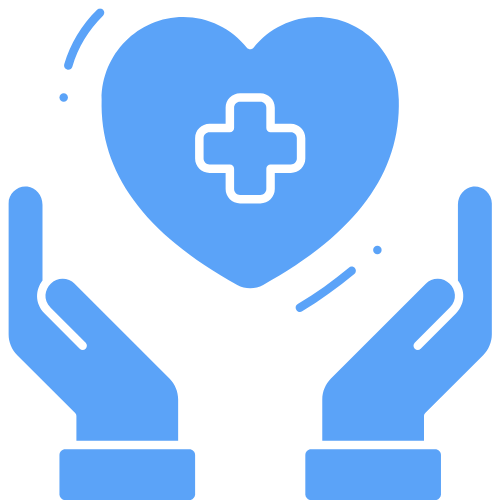Proper anxiety management greatly improves seven core symptoms in your daily life. You’ll experience reduced chronic nervousness and excessive worry, decreased physical tension and restlessness, enhanced emotional stability, better social confidence, improved mental focus and cognitive performance, reduced avoidance behaviors, and stabilized cardiovascular health markers. These improvements stem from consistent application of evidence-based techniques, with research showing up to 35% reduction in stress-related health events. Understanding these symptoms helps you target your management strategy more effectively.
Chronic Nervousness and Excessive Worry

While chronic nervousness and excessive worry affect millions of adults annually, proper anxiety management can substantially reduce these core symptoms of Generalized Anxiety Disorder (GAD). You’ll find that when you address persistent anxiety through evidence-based treatments like cognitive-behavioral therapy, your constant feeling of being “on edge” diminishes considerably. Patients commonly experience somatic symptoms like headaches, dizziness, and fatigue that can improve with treatment. Research shows that effective management leads to measurable decreases in both the frequency and intensity of worry patterns, with improvements documented on standardized scales like the GAD-7. The condition affects roughly 31.1% of adults at some point in their lives, highlighting the importance of proper treatment.
These reductions in chronic nervousness and excessive worry extend beyond immediate symptom relief, offering executive function benefits and sleep quality improvements. Clinical data indicates that proper anxiety management helps you regain control over intrusive thoughts, allowing you to function more effectively in daily activities that anxiety previously disrupted. This is particularly important for women, who experience higher anxiety rates across mild, moderate, and severe symptoms compared to men.
Physical Tension and Restlessness
Regular aerobic exercise and yoga can effectively release your muscle tension through structured physical activity at least 3-4 times per week. You’ll gain better control over your heart rate and other autonomic symptoms through consistent practice of these evidence-based movement techniques. Managing restless energy becomes easier when you incorporate both high-frequency cardio exercises and targeted relaxation methods into your anxiety management routine. Studies have shown that medium- and long-term exercise produces significant regulatory benefits for anxiety symptoms. Healthcare providers play a vital role as exercise recommenders for anxiety patients. The sympathetic nervous system, which mediates most anxiety symptoms, can be better regulated through these physical activities.
Muscle Tension Release Techniques
Progressive Muscle Relaxation (PMR) stands out as a cornerstone technique for managing physical manifestations of anxiety. Through systematic tension and release of muscle groups, you’ll develop heightened muscle awareness development and perceived self-efficacy enhancement. This evidence-based approach helps you distinguish between states of tension and relaxation while engaging your body’s natural calming response. Research shows that consistent relaxation practice can help reduce cortisol levels significantly. PMR can effectively address several conditions, including tension headaches and chronic pain. Making yourself fully comfortable in a sitting or lying position is essential for optimal results.
- Start in a quiet setting, moving systematically through major muscle groups from feet to face
- Coordinate your breathing: inhale during tension (5 seconds), exhale during release (10 seconds)
- Practice with decreasing intensity to refine your awareness of muscle states
- Use relaxation cues during release phases to reinforce the calm state
With consistent practice, you’ll strengthen your mind-body connection and develop improved coping abilities for managing anxiety-related physical symptoms in daily life.
Heart Rate Control Methods
Managing your heart rate effectively stands as a critical component in anxiety reduction, particularly when experiencing physical tension and restlessness. Through biofeedback implementation using wearable devices, you can actively modulate your cardiac vagal tone, with studies showing significant reductions in anxiety scores after consistent practice. Participants who used heart rate variability biofeedback showed decreased GAD-2 scores from 4.6 to 1.7. These practices are enhanced when you maintain proper sleep habits, which help regulate cortisol levels and stabilize heart rhythms.
Deep breathing exercises incorporating nostril inhalation followed by extended exhalation through the mouth provide an accessible method for heart rate control. Respiratory training benefits emerge through specific techniques like box breathing (4-4-4-4 pattern) and the four-seven-eight method, which help stabilize your autonomic nervous system. You’ll find immediate relief through grounding exercises, especially the five-senses technique or applying cold sensations to trigger vagal responses. Regular physical activity, particularly walking or yoga, naturally regulates your heart rhythm while releasing endorphins. Combining these approaches with proper sleep and nutrition optimizes your body’s ability to maintain heart rate stability during anxious episodes.
Restless Energy Management Strategies
When physical tension and restlessness manifest during anxiety, implementing targeted energy management strategies can substantially reduce these symptoms. Through consistent practice of stress management techniques, you’ll gain better control over your body’s response to anxiety. Since stress affects individuals differently, personalized approaches may be needed to find the most effective combination of techniques for you. Proper relaxation techniques can help improve your digestion and reduce physical discomfort associated with anxiety. For older adults experiencing anxiety symptoms, progressive muscle relaxation shows particularly promising results.
- Practice progressive muscle relaxation to release physical tension systematically, tensing each muscle group for 5 seconds before relaxing for 30 seconds
- Incorporate mindfulness meditation and breathing exercises to center yourself in the present moment, reducing physiological arousal
- Engage in structured movement like yoga or tai chi to channel restless energy productively while improving mind-body connection
- Maintain lifestyle factors that support anxiety management, including adequate sleep, proper nutrition, and limited caffeine intake
These evidence-based approaches work together to decrease muscular tension, regulate energy levels, and promote overall physical calm.
Emotional Well-being and Mood Stability
| Emotional Benefits | Measured Improvements |
|---|---|
| Mood Stability | 23.0% increase |
| Anxiety Reduction | 20.3% decrease |
| Self-Efficacy | Significant boost |
| Negative Affect | 12.1% reduction |
| Overall Wellness | >20% enhancement |
You’ll notice substantial improvements in your distress tolerance and emotional coping skills. Research confirms these benefits persist through six months post-intervention, with measurable decreases in emotional volatility, reactivity, and mood swings. Your enhanced resilience to daily stressors will contribute to sustained psychological well-being and reduced likelihood of emotional dysregulation. The comprehensive study demonstrated that patients receiving psychological interventions and relaxation exercises showed lasting improvement in their anxiety and wellness levels.
Social Anxiety and Interpersonal Confidence

Thorough anxiety management programs demonstrate remarkable efficacy in reducing social anxiety symptoms and boosting interpersonal confidence. Clinical evidence shows significant improvements in both the Liebowitz Social Anxiety Scale and Social Adaptation Self-Evaluation Scale scores, indicating enhanced workplace adaptation and social inclusion capabilities.
- You’ll experience decreased anxiety symptoms through CBT, with high-severity cases showing the most substantial improvements
- Your interpersonal confidence will strengthen through work-focused interventions that simulate real social scenarios
- You can expect better social functioning outcomes, approaching levels seen in non-anxious populations
- You’ll develop proactive coping strategies that reduce avoidance behaviors and fear of judgment
These improvements are particularly significant given that many people delay treatment for a decade or longer, unnecessarily prolonging their symptoms.
Mental Focus and Cognitive Performance
Beyond social interactions, anxiety greatly impacts your cognitive functioning and mental performance. When you’re anxious, your attention becomes scattered, making it harder to concentrate and filter out distractions. Your working memory suffers, affecting both problem-solving skills and memory retrieval under pressure.
You’ll notice slower reaction times and processing speed, especially in high-pressure situations. Your brain’s executive functions, including the ability to switch between tasks and adapt strategies, become compromised. While your planning abilities remain intact, you’ll struggle with mental flexibility and controlling unwanted thoughts.
Through proper anxiety management, you can improve these cognitive symptoms. Your brain can better filter sensory information, maintain focus on relevant tasks, and operate with greater efficiency in challenging situations.
Avoidance Behaviors and Daily Activities

Through proper anxiety management, you’ll break free from avoidance patterns that restrict your daily activities and social connections. Your commitment to confronting feared situations directly, rather than avoiding them, leads to significant improvements in both personal and professional functioning. As you restore balance in your daily routines and overcome social withdrawal, you’ll experience enhanced engagement in life activities and stronger relationships with others.
Breaking Avoidance Patterns
Breaking unhealthy avoidance patterns stands as a critical component in managing anxiety effectively. Through therapist-guided exposures and consistent practice, you’ll develop new neural pathways that support long-term neuroplasticity, enabling lasting behavioral change. Your brain’s adaptive capacity allows you to reshape your response to anxiety-provoking situations through systematic engagement rather than escape.
- Cognitive Behavioral Therapy interventions help you identify and modify avoidance behaviors that maintain your anxiety cycle
- Systematic exposure gradually increases your tolerance to feared situations while building confidence
- Mindfulness and grounding techniques enhance your ability to stay present during challenging moments
- Strategic rewards and positive reinforcement strengthen your commitment to facing, rather than avoiding, anxiety-triggering scenarios
These evidence-based approaches create measurable improvements in daily functioning and emotional resilience.
Restoring Life Balance
Restoring life balance requires strategic attention to five core domains: work productivity, physical health, emotional stability, social connections, and sleep patterns. When you manage anxiety effectively, you’ll experience a 21% boost in productivity and enhanced cognitive functioning, leading to better engagement in daily activities.
Your physical health improves through consistent exercise and proper dietary habits, while emotional stability strengthens as you reduce exhaustion and negative emotions. By prioritizing hobby engagement and community participation, you’ll join the 94% of workers who find work-life balance essential for well-being. You’ll also notice improved social connections, with increased attendance at cultural events and stronger family relationships.
Better anxiety management helps regulate sleep patterns and energy levels, reducing fatigue and supporting your overall recovery from stress-related symptoms.
Overcoming Social Withdrawal
Effective anxiety management directly impacts your ability to overcome social withdrawal patterns. As you engage in proper interventions, you’ll experience decreased avoidance behaviors and increased participation in daily activities. This leads to improved social skill development and enhanced peer relationships, creating a positive cycle of engagement and growth.
- You’ll notice reduced avoidance of social situations, making it easier to participate in school, work, and community events
- Your daily activity participation will increase, supporting better educational and occupational outcomes
- You’ll develop stronger social skills through consistent exposure and practice in various social settings
- Your reliance on safety behaviors will decrease as you gradually reintegrate into social environments
These improvements help break the cycle of withdrawal, fostering lasting psychological resilience and sustained social engagement.
Cardiovascular Health and Stress Biomarkers
While anxiety disorders can markedly compromise cardiovascular health, proper management yields measurable improvements across multiple physiological markers. Through consistent anxiety treatment, you’ll experience reduced inflammation and improved autonomic balance, evidenced by enhanced heart rate variability and decreased stress biomarkers. Your sympathetic nervous system activation diminishes, leading to better blood pressure control and heart rate regulation.
When you manage your anxiety effectively, you’ll lower your risk of coronary artery disease by 26% and decrease your chances of major cardiovascular events by 35%. Your body responds with improved platelet function, decreased oxidative stress, and better endothelial health. These physiological improvements, combined with enhanced medication adherence and increased physical activity, create a protective effect against cardiovascular complications and support better long-term cardiac outcomes.
Frequently Asked Questions
How Long Does It Typically Take to See Improvements in Anxiety Symptoms?
You’ll typically notice gradual progress within the first few weeks of starting treatment, though significant improvements usually take 12-24 weeks to emerge. With sustained commitment to evidence-based treatments like CBT or medication, you’ll see the most substantial changes around 3-6 months. Your specific timeline may vary based on factors like symptom severity, type of intervention, and presence of comorbid conditions. Maximum benefits often continue developing up to 18 months post-treatment.
Can Anxiety Management Techniques Work Without Medication?
Yes, you can effectively manage anxiety without medication through evidence-based techniques. Research shows that CBT and other psychological interventions offer significant mental health benefits, with 60% of adults reporting substantial improvement using medication-free approaches. You’ll likely experience reduced symptoms through proper therapy, as studies demonstrate a 20.3% reduction in anxiety scores with psychological treatments alone. These methods are particularly effective when you maintain consistent engagement with therapeutic protocols.
What Role Does Diet Play in Anxiety Management?
Your diet plays an indispensable role in anxiety management through two key pathways. First, consuming nutrient-rich foods helps regulate neurotransmitters that affect mood and stress response. Second, the gut-brain connection profoundly influences anxiety levels through your microbiome health. You’ll find that eating a Mediterranean-style diet, rich in whole foods, omega-3s, and probiotics, while limiting sugar and processed foods, can markedly reduce anxiety symptoms and improve your emotional resilience.
Are Anxiety Management Benefits Permanent or Do Symptoms Eventually Return?
While you can achieve significant benefits from anxiety management, these improvements aren’t always permanent. Research shows long-term effectiveness typically extends up to 12 months post-treatment, with relapse rates ranging from 0-14% during this period. Symptom recurrence may occur after the first year, particularly if you have severe initial symptoms or discontinue maintenance strategies. You’ll likely need ongoing monitoring and possible booster interventions to maintain your progress, especially if you’re at higher risk.
Which Anxiety Management Method Has the Highest Success Rate for Children?
Based on the evidence, you’ll find the highest success rate with combination therapy, CBT plus SSRIs, showing a 70% or higher improvement rate for children with severe anxiety. This approach excels at identifying triggers and developing coping strategies through CBT’s structured framework, while medications help manage underlying symptoms. You’ll see particularly strong outcomes when parents are actively involved and treatment begins early, especially between ages 8-18.
















